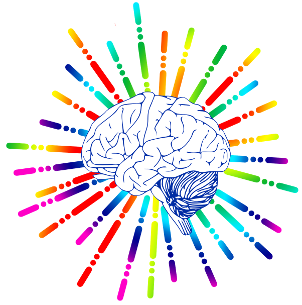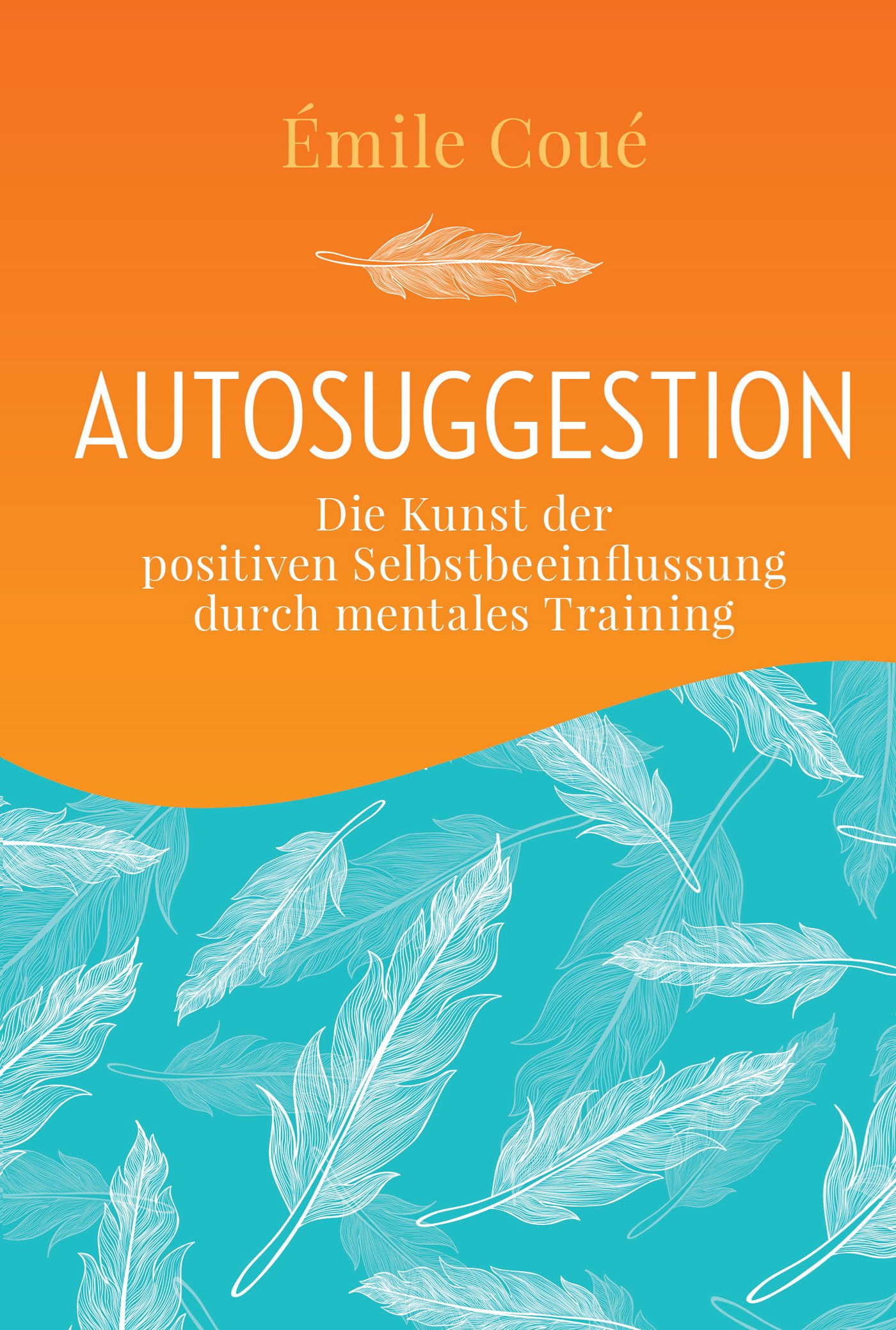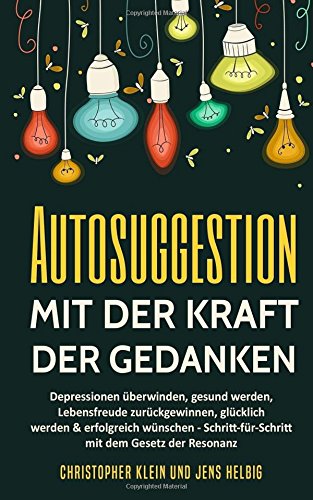Autosuggestion
Table of Contents
- Basics & Meaning
- History
- Autosuggestive Training
- Heterosuggestion
- Autosuggestion in Coaching
- Further Recommendations
Basics & Meaning

Often, the term autosuggestion is used synonymously with the phrase "mental self-influence." This synonym actually describes quite well what autosuggestion is about: influencing our thoughts, feelings, and actions solely through our own thoughts. Autosuggestion assumes that the brain is programmable, much like a computer.
The most well-known examples of autosuggestion are the placebo and the nocebo effect.
Everyone experiences this in their daily lives. An important exam, a meeting, or a presentation is coming up, and on the morning of the event, a specific sweater, blouse, or pair of shoes must be worn for the day to go well. If certain positive effects are induced by a "dummy substance" in medicine or, in our case, by wearing a particular sweater, this is called the placebo effect.
Less well-known by name but much more common in daily life is the so-called nocebo effect. It is the exact opposite of the placebo effect, i.e., the emergence of negative effects from actually neutral treatments or situations. Everyone knows this: at the doctor's office, you are prescribed a medication, and you read the package insert. Under side effects, it says, "may cause headaches." You take the medication, and a few hours later, you have a headache, supposedly as a side effect of the medication. A classic example of a nocebo effect.
Autosuggestion influences the subconscious mind to believe certain content, which ultimately reflects in our behavior and our body.
The basic assumption is that "every person can enhance their well-being through suggestion formulas." Suggestion formulas, also known as belief systems or affirmations, are sentences whose content represents the desired goals. Examples of suggestion formulas would be:
- "I feel good and I am happy."
- "Tonight, I will have a lucid dream."
- "I can do this."
History
Autosuggestion was 'discovered' by Émile Coué, a French pharmacist in the 19th century. Coué observed that the effectiveness of the medications he sold to his customers depended on the words he used to give them the medicine. Thus, the effect of the medicine was much higher in customers to whom he sold medication with the words "The doctor prescribed you a good remedy. It will work soon, and you will feel better quickly."
Autosuggestive Training
Prerequisites
Prerequisites for successful autosuggestive training are:
- Mindfulness
- Association
- Continuous & Time-Stable Repetition
Mindfulness refers to complete concentration on the respective belief system. Distractions from phones or televisions should be avoided as much as possible while repeating the belief system so that attention can be fully focused on repeating and mentally visualizing (associating) the contents of the belief system.
With association, it is also important to truly live the affirmation internally. Therefore, belief systems should be repeated with as much love and enthusiasm as possible and not just rattled off mechanically. Following the Walt Disney motto: "If you can dream it, you can do it." By mentally visualizing the thought, the effectiveness of the affirmation statement can be significantly increased. Furthermore, the effectiveness and the success associated with the belief system are strongly dependent on the time stability and consistency of repetition. Most affirmations require daily repetition for at least 1 month to show changes in behavior and feelings.
Procedure

Goal
- First, a goal must be suggested or set for an autosuggestion .
- For example, I want to be able to control my dreams.
Relaxation
- In the second step, it is important to avoid external distractions. The goal is to relax physically and mentally. This can be done, for example, by tensing certain muscle groups (first feet, then legs, upper body, arms, etc.) or by other techniques such as classical autogenic training.
Breathing
- To further relax, it is often helpful to pay close attention to your own breathing and, for example, to breathe in and out deeply several times.
Goal Visualization & Repetition of Suggestion Formula
- Now, quietly speaking or imagining the respective goal should be thought of. For this, a suggestion formula must be devised. The belief statement should be formulated in such a way that it feels completely natural. Such formulas usually arise completely intuitively.
- For example, the thought: "Tonight, I will be able to control my dreams."
Repetition
- Now, the belief statement must be repeated with as much enthusiasm and love as possible.
- For example, in our example, this would mean repeating the thought internally until falling asleep.
Applicability
Autosuggestion can be applied in almost any area. Whether it's in one's own career, in learning lucid dreaming, in falling asleep better, or in the desire to lose weight or quit smoking.
Mental Area
- Boosting self-confidence
- Increasing self-esteem
- Boosting self-assurance
- Increasing motivation
- Reducing stress
- Enhancing performance
Medical Area
- Telling oneself with medications "This will help me"
- Use of placebos
- Believing "I am healthy and will stay healthy"
- Reducing hair loss
Personal Area
- "Healing" from heartbreak
- Getting rid of depressive/bad moods
- Combatting fears
Material Area
- Increasing wealth
- Maximizing success
Practice
In everyday life, autosuggestion is often referred to as a "self-fulfilling prophecy." It is used, among other things, particularly in advertising and education.
Example

Please pay particular attention to reading and perceiving the entire text word for word in the following exercise.
Imagine you're going shopping and buying lemons. To decide if the lemon is good or not, feel its firmness and smell it - it smells slightly acidic and a bit sweet. At home, you take the purchased lemon out of the bag, place it on a plate, take a knife, and cut it. You see a little lemon juice flow onto the plate as you cut it. Now, take a piece of the cut lemon into your mouth and take a bite.
Now, please ask yourself the following questions:
What did I observe about myself?
How did I react in the different situations (feeling, smelling, seeing, tasting)?
What did I perceive?
Perhaps you now realize that you've already wrinkled your face while reading the short text passage, your mouth has watered, or you've even faintly smelled or tasted lemon - just a tiny hint!
The demonstrated example shows excellently how quickly and easily autosuggestion can affect our behavior, thoughts, and feelings. Our brain does not differentiate between actual experiences and pure imagination when it comes to thoughts. Thus, we may grimace, for example, even though we're not really smelling, seeing, or tasting a lemon when we just think about eating one.
Heterosuggestion
The opposite of autosuggestion, i.e., the imaginary repetition of belief statements, is heterosuggestion. Heterosuggestion often arises from societal norms, values, or standards under which people grow up, so it always acts externally on the internal thinking, feeling, and actions of individuals. Especially in education, heterosuggestion plays a significant role.
In education, heterosuggestion describes the influence of the behavior of parents or other caregivers on the child. If a child, for example, sees from the beginning how its mother always screams and sends the father to remove a spider whenever she sees one, and if the child is also repeatedly told the belief statement "Spiders are dangerous and disgusting," then it will probably develop a fear of spiders itself. In the personal context of education, such heterosuggestion can lead, for example, to phobias (e.g., of spiders) or other fears. However, heterosuggestion can also be used positively in education. For example, if the mother motivates the child before every exam with the words "YOU can do it. YOU will write a good grade," it is likely that the child will also adopt this belief statement and develop a greater sense of self-esteem than a child who frequently hears the phrase "You can't do that yet."
Autosuggestion in Coaching
In coaching, autosuggestion is particularly used to change beliefs and attitudes and to mobilize reserves of strength. In general, a distinction is made here between functional cognition and dysfunctional cognition. Functional cognition refers to helpful ideas and belief statements, while dysfunctional cognition deals particularly with negative, unhelpful ideas and belief statements. Which form of suggestion formulas or cognition a person tends to lean towards can be particularly well recognized by generalizations. If a person tends to say "I can't do this anyway," then negative belief statements are predominant in them, whereas for people with the affirmation "I can do this," positive belief statements are at the center of their thinking. The goal of coaching is to initiate a positive personal development. By eliminating negative affirmations and generating positive ones, such development via belief statements is possible.



